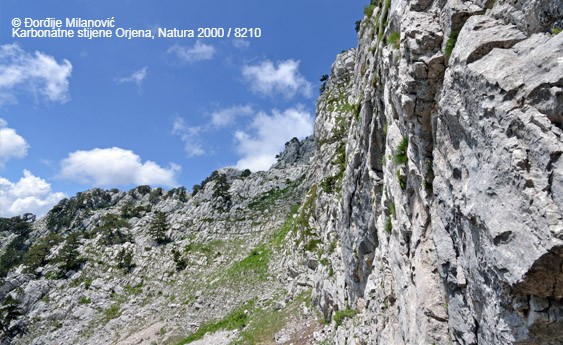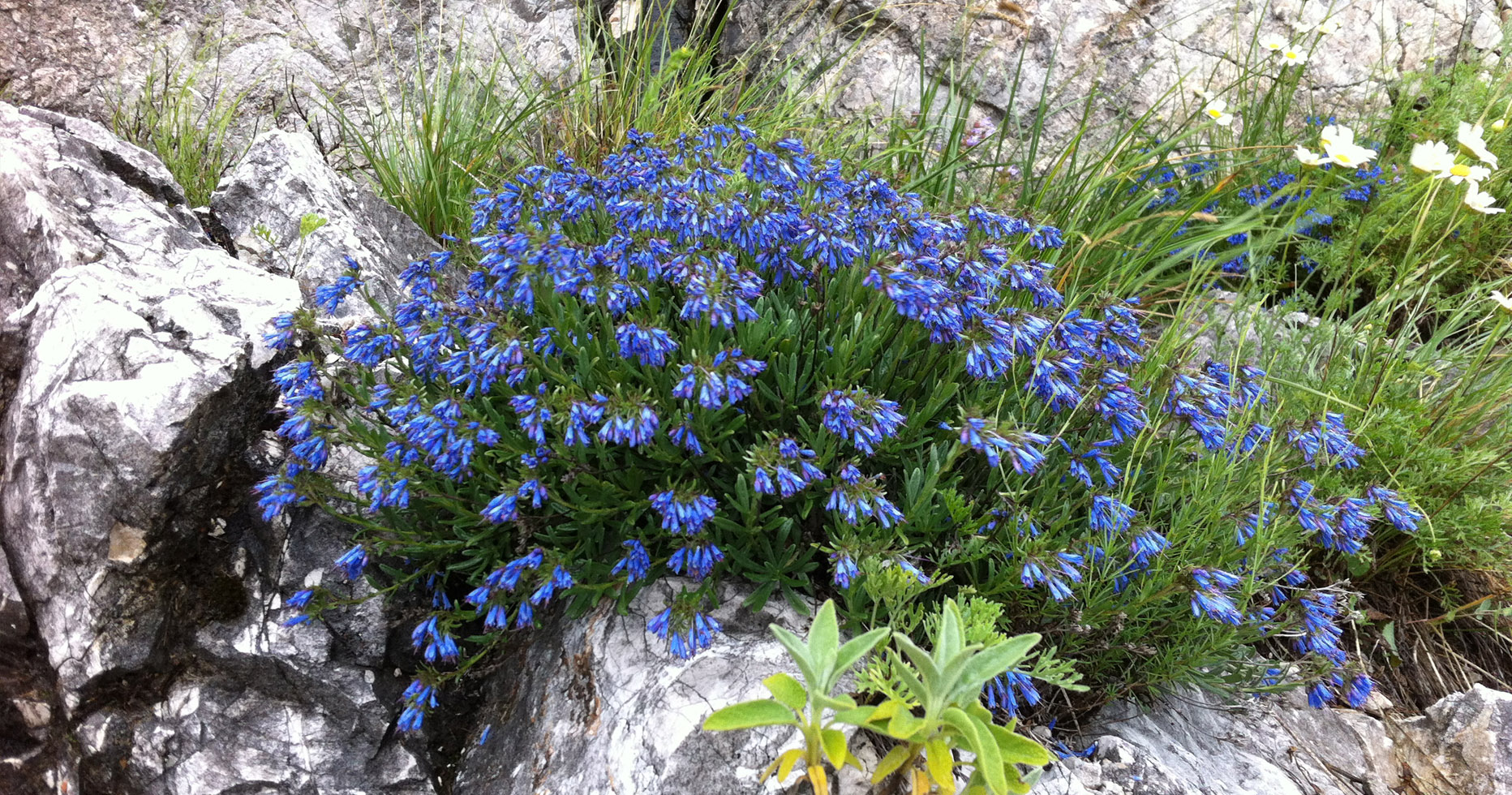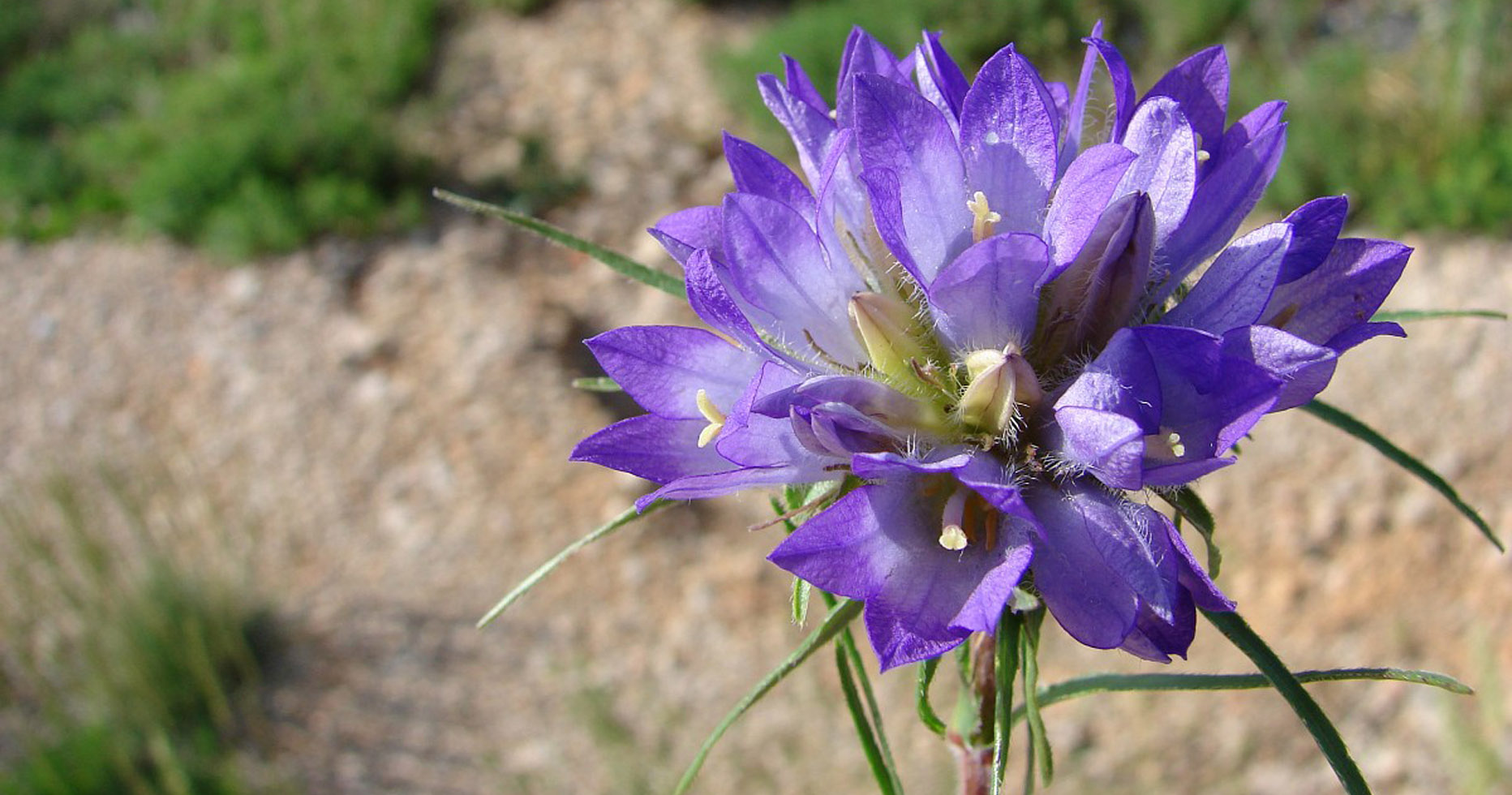8210 Carbonate rocks with chasmophytic vegetation

PAL.CLASS.: 62.1
EUNIS 2007: H3.2
Specific communities are formed in the crevices of the Dinarides’ carbonate rocks, where most of the endemic plant species grow. Vegetation belonging to Potentilletalia caulescentis order, which, in addition to the open rock sinuations, includes those within forest complexes, are present in the western Dinarides. In the mountain subalpine and alpine belt of the central and south-east Dinarides, vegetation belonging to endemic Amphoricarpetalia order alternate.
Included types: Adianthetum capillus-veneris, Pinguiculetum hirtiflorae, Polypodietum cambric, Polypodietum vulgare, Phyllidetum scolopendrii, Cystopteridetum fragilis, Putorietum calabrice, Centaureetum glaberrimae, Ramondetum serbice, Seslerietum robustae, Moltkietum petraeae, Seslerietum juncifoliae, Edriantheum, Amphoricarpetum, Potentilletum clusianae, Micromerietum croaticae and alike.
Indicator species: Adiantum capillus-veneris, Pinguicula hirtiflora, Polypodium cambricum, Polypodium vulgare, Phyllitis scolopendrium, Cystopteris fragilis, Asplenium trichomanes, Neckera crispa, Putoria calabrica, Sesleria robusta, Centaurea glaberrima, Moltkia petraea, Campanula austroadriatica, Sesleria juncifolia, Asplenium lepidum, Asplenium trichomanes, Edrianthus graminifolius, Campanula rotundifolia, Seseli rigidum, Centaurea incompta, Potentilla caulescens, Minuartia clandestina, Edrianthus serpyllifolius etc.
Carbonate rocks with chasmophytic vegetation are spread from the coast to the alpine belt on the Dinaric Arc. Rock crevices are specific habitats ruled by difficult life conditions, fine soil in the cracks and large daily and annual temperature fluctuations. A large regional diversity of species and communities are represented in this habitat type, with a significant number of both local and endemic plants. The habitats include vegetation in the crevices of carbonate rocks with a wide spread from the coast to alpine belts. Yet, two subtypes can be distinguished: thermo- and meso–Mediterranean rocks, and mountain and oro-Mediterranean rocks. This type of habitat cannot be replaced with other types because it is physiognomically very clear. Ecologically, it is very heterogeneous, so, it can form different communities: from extremely dry to continually humid, from those without vascular plants to those completely overgrown, from shaded ones to sunny etc. Some of interesting representatives on this type of habitats are:

© Muriel Bendel
Moltkia (Moltkia petraea)
Moltkia (Moltkia petraea) is spread in south-east Europe and is an endemic to the Balkan Peninsula. It grows in sunny and dry places in the rock crevices. The name of the genus refers to the fact that it grows on rocky places, and comes from the Greek word petros meaning stone, rock. Leaves, stems and flowers have antioxidant properties.

© Jasenka Topic
Narrow-leaved bluebell (Edraianthus tenuifolius)
Narrow-leaved bluebell (Edrainthus tenuifolius) is a true natural decoration of the Mediterranean and sub-Mediterranean. Entire genus of Edraianthus A. DC. Is endemic and very interesting for the research of taxonomic and biogeographic features because the centre of its prevalence is the central part of the Balkan Peninsula. In the vertical aspect, the species of this genus are on just a few meters from the sea, and other species of the genus are on the highest peaks of the mountain massifs. This species is endemic to the coastal Dinarides that include narrow area of Slovenia, then Croatia, Bosnia and Herzegovina, Montenegro and Albania. The closest relative of the narrow-leaved bluebell is a narrowly endemic Edraianthus hercegovinus K. Maly, which is represented only on Jelenak – Čvrsnica mountains.
